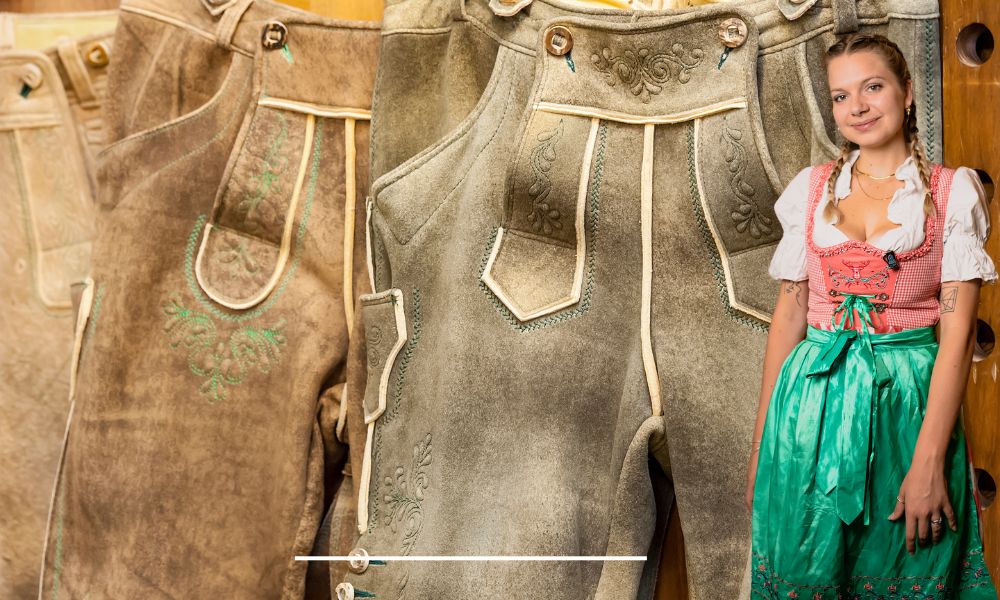Dirndls and Lederhosen
Two of the most popular local costumes traditionally associated with the Bavarian are Dirndls and lederhosen. Embedded with rich tradition and style, these garments are used when attending the holiday functions as Oktober fest, wedding and other related occasions.
As beautiful, colourful, detailed and historically deep as they are, dirndls and lederhosen are clearly loved garments that represent the region of Bavaria perfectly. This article is devoted to the discussion of the background and stories, varieties, and roles in the culture of wearing both dirndls and lederhosen and the essential purchasing and wearing advice.

History and Origins
Dirndls and lederhosen, we must remember, have their origins in the folk costumes people wore when living in rural Bavarian, Bavaria being a region of southern Germany renowned for its killer scenery, phenomenal cuisine, and robust Folk culture. As a brief history of these garments it is worth to note that they originated in the 17th century, after farmers and peasants of Bavaria wear traditional regional garments that were comfortable and functional.
The dirndl, a females’ dress, was used as casual attire before it developed into a combination of blouse, a full skirt and an apron. Lederhosen, or the traditional German trousers, were made of leather out of a need for protection while working on the work manual tasks, whereas, for men those were for. Slowly these were developed into elegant things we know on today and are appendages to civilisation.
Types and Variations
The same can be said for dirndls and lederhosen where there are many types of each of them that are rather different because they exist for specific areas and get subcultures in Bavaria. The following are some of the most popular types of dirndls and lederhosen:
1. Dirndl:
There is great variability in dirndls, but the most traditional dirndl consists of a white blouse having puffed sleeves and a waistcoat fetching bodice having lace on the bust and a full skirt in a bright colour of their choice such as red or blue. Da more frills and options of Dirndls are many, the wearer can add some ornaments such as butterfly brooch, embroidered scarves, gold pins for belt, and even wooden clogs known as getränke.
2. Lederhosen:
Clothes Lederhosen are only for the male and made of the leather material of high quality. They fit fairly close to the skin, and frequently have elaborate emblems or button front closures. Versions include the short sleeved lederhosen or the long sleeved lederhosen depending with the choice of the individual. Common colours of lederhosen are brown, black and white.
Cultural Significance
dirndls and lederhosen were always important within Bavaria region to the hospitality industry. Oktoberfest is a 16 to 18 days folk festival on Munich, with millions of people coming from every corner of the earth.
Residents and tourists wear those peculiar garments for the purpose of reveling the spirit of Bavarian and relishing Bavarian cuisine, performing Bavarian songs and dancing Bavarian dances.
The wearing of dirndls and lederhosen to weddings and other festive occasions necessarily indexes a Bavarian ethnicity which also conveys the feeling of happiness at a festive occasion. furthermore Dirndl and lederhosen are now a common representation of German tourism and people wear them as a way signifying that they embrace Bavarian culture.
Why to Buy and Wear Dirndls and Lederhosen.
It is important when deciding which of the garments to buy and in which colors and sizes, in order for them to fit well on person’s lines and shape and preferences.
With regard to accessories it is also beneficial to choose such that give the best impression and conform with even more strict Bavarian clothing aesthetic. Dirndls and lederhosen are of course traditional wear and so, keeping that in mind, one should always consider dirndls and lederhosen to be articles that should express a certain culture and tradition.
The thing to always keep in mind and should be perpetually ingrained, is that behind these ‘playful’ outfits there rests history and tradition worthy not just of respect but of celebration.
Conclusion
Dirndls and lederhosen form part and parcel of Bavarian tradition and are now considered to embody the true GERMAN spirit. These shirts remain favourites and attract as many people into Bavarian customs and celebration as before.
This knowledge of these outwears background and meaning means that, during festivities and functions, dirndl and lederhosen should be worn totally embodying both the tradition and the aesthetics of those garments.
